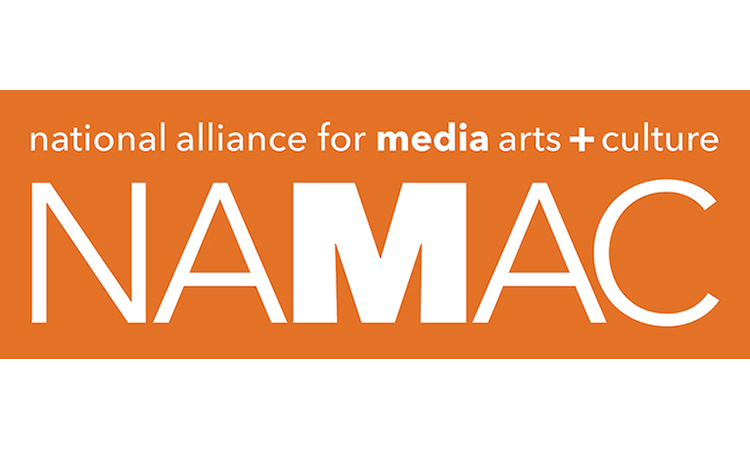read the eBulletin in its entirety here—scroll down to subscribe
From the Executive Director

October is a big month, isn’t it?
I’m tired and inspired from a few road trips—meeting with artists, organizations, members, and partners; leading and mentoring labs and workshops; co-creating new initiatives; planning conferences; and trying to mind-meld with funders. Here’s some highlights:
Conference Planning
The planning for ALLIANCE 2016 (the June NAMAC conference) has kicked into high gear—we’ve partnered with Story Matters to produce a blowout event in Oakland June 9th through 12th—so save the date! So many of our phenomenal Creative Leadership Lab alumni will be co-leading tracks, moderating roundtable conversations, curating screenings, and hosting youth. We’ll have super exciting content, a VR/AR playground, movies and performances, special breakout and collaboration spaces with couches and fresh air, buffet breakfasts and artisan box lunches, screens large and small, and even room for dancing. And you’ll love the mobile app—it will extend beyond the conference and help us find each others’ screenings and community events around the world all year long. And I’m meeting with the Mayor’s office next week—the City of Oakland is already gearing up to welcome us media arts and culture folks next year. So let’s make some noise. If you have an idea for the conference you’d like to share with us—there’s a form on the Conference page of the website. Use it!
GoodPitch
NAMAC member BritDoc’s NYC GoodPitch was as good as it gets. I was excited to be able to cheer on NAMAC Innovation Studio project Roll Red Roll (Nancy Schwartzman & Jessica Devaney) and meet filmmakers Damon Davis and Sabaah Jordan, the creative team behind the new documentary Whose Streets. Immediately invited them to our upcoming Video Roundtable.
These days, when we talk about storytelling, we almost always end up talking about power. … Whether you shoot with a 360° camera or a mobile phone, the questions about who speaks and whose stories gets told are still up for grabs.
 Video Roundtable: Black Lives Matter and the Future of Storytelling
Video Roundtable: Black Lives Matter and the Future of Storytelling
This next Video Roundtable is happening on Monday, November 16th at 10AM Oakland time/1PM Brooklyn time. These days, when we talk about storytelling, we almost always end up talking about power. The goal of this conversation is to look deeper at the intersection of media, inequality, and innovation through the lens of #BlackLivesMatter and riff on how the future of movement-building has been and will be impacted by digital innovation. As artists dive into the augmented and virtual reality future, and it becomes clear you don’t need film school to be a filmmaker, are we turning back the clock on culture? Whether you shoot with a 360° camera or a mobile phone, the questions about who speaks and whose stories gets told are still up for grabs. At the end of the 75-minute conversation, we hope to grow the network of engaged storytellers and organizations working on racial justice and equality, share resources, concerns, works-in-progress, and new ideas. We hope to identify strengths as well as gaps and figure out some ways forward that we can work on together, in community.
On a final note, if you like what’s been happening at NAMAC—all of the above plus the Innovation Studio and Creative Impact Network, the Hatch Labs, the Youth Media Collective Action work, the blog series Storytelling Matters and The Meaning of Creative Leadership and all the rest of it—now is the perfect time to RENEW your membership, or JOIN the organization. It’s nearly impossible for me to communicate just how valuable it is for this Alliance to grow into a self-supporting, sustainable force of nature. If we are going to be a membership organization, the scale and scope and depth of our membership matters. Let’s do this; let’s make the world a more free, equal, creative, imaginative, resilient place. Let’s be the artists and changemakers we were born to be.
As always, send me an email if you’d like to connect—wendy@namac.org
Media Policy Watch
By Rose Kaplan
From Ferguson to Baltimore to Tuesday’s attack on a black Columbia, SC high school student by her white school resource officer, police violence against black Americans has raised a number of additional pressing issues around citizen journalism—in the Spring Valley High case, the student who filmed the proceedings was arrested and only released after paying $1,000. Free Press’s Mary Alice Crim writes here about the importance of protecting journalists as they exercise their legal right to film the police.
Another intersection of policing and media policy—earlier this month, California Governor Jerry Brown signed CalECPA, which requires police to obtain a warrant before accessing Californians’ digital records, including emails, texts, and geographic location data. The bill is being hailed as the nation’s best digital privacy law.
[A] new exemption to the Digital Millennium Copyright Act … will allow documentary filmmakers to access and use footage from newer, higher-quality formats including Blu-ray and digitally transmitted videos.
In Washington, the FCC voted last week to reduce skyrocketing costs for prison phonecalls. The ruling will cap rates for inmates making local and in-state long-distance calls and will cut the existing cap on interstate long-distance calls by up to 50 percent.
Meanwhile, the Senate passed the much-maligned Cybersecurity Information Sharing Act, which, as Andy Greenberg and Yael Grauer describe in Wired, effectively incentivizes tech companies’ sharing with the Government of as much user data as possible, as quickly as possible, with no oversight.
On the plus side, earlier this week the U.S. Copyright Office announced a new exemption to the Digital Millennium Copyright Act that will allow documentary filmmakers to access and use footage from newer, higher-quality formats including Blu-ray and digitally transmitted videos (NAMAC helped spearhead this effort!)—although some filmmakers and media policy analysts are displeased that the exemption was not similarly extended to narrative filmmaking.




Leave a Reply